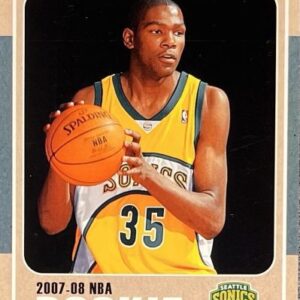The world of basketball card collecting has long been embroiled in a debate that strikes at the heart of sports memorabilia: which card represents Michael Jordan’s true rookie card? The contenders are the 1984-85 Star #101 and the 1986-87 Fleer #57. This debate involves factors such as the evolution of the trading card industry, authenticity concerns, and the standards set by grading companies.
The Star #101 Michael Jordan card, part of the 1984-85 Star set, was issued in 1984, the same year Jordan made his NBA debut with the Chicago Bulls. Unlike the Fleer #57, which utilized the conventional pack form of distribution, the Star #101 card had a limited distribution primarily through team sets. This unique distribution method plays a pivotal role in the card’s story and its classification.
On the other hand, the Fleer #57 Michael Jordan card, released in 1986, is often heralded as Jordan’s official rookie card. The Fleer set followed the traditional model of card distribution and was widely available in pack form, making it more aligned with collectors’ expectations of a rookie card.
The Star #101 card is often labeled as an XRC, or extended rookie card. It bears this classification due to its limited distribution and the fact that Star Company cards were not widely available in retail stores. XRCs are typically cards that precede a player’s first widely released card, which, in Jordan’s case, is the Fleer #57.
Professional Sports Authenticator (PSA), a leading grading company, has been reluctant to grade Star cards, including the 1984-85 Star #101 Jordan card, due to the high number of counterfeits and the challenges in authenticating them. However, in recent years, PSA has acknowledged the significance of these cards in the sports card market and has begun grading them, utilizing advanced techniques for authentication.
The debate revolves around whether to prioritize historical significance or traditional definitions. Advocates for the Star #101 card argue for its historical significance as the first card to feature Jordan as an NBA player, closer to his actual rookie year. On the other hand, supporters of the Fleer #57 card emphasize its adherence to the traditional definition of a rookie card – widely distributed and available in packs to the general public.
Market perception also plays a significant role in this debate. The Fleer #57 card is more recognized and sought after by collectors, often commanding higher prices in the market. This recognition is partly due to Fleer’s status in the industry and the wider availability of the card.
The impact of this debate extends to collectors and investors. Purists and historians may have a special affinity for the Star #101 card, as it aligns chronologically with Jordan’s entry into the NBA. However, investors and mainstream collectors often gravitate towards the Fleer #57, considering it the ‘official’ rookie card due to its wide distribution and recognition.
Authenticity remains a major challenge, especially for the Star #101 card, which has been flooded with counterfeits over the years. PSA’s decision to grade these cards provides a new level of legitimacy but also sparks debates regarding grading standards and card authenticity.
The distribution method of the Star #101 card, primarily through team sets, is another factor shaping the debate. Some argue that this unique distribution method diminishes its status as a ‘true’ rookie card compared to the Fleer #57, which adheres to the standard pack distribution prevalent in the trading card industry.
This debate also sheds light on the evolution of the sports card market and the changing perceptions of what constitutes a rookie card. The Star #101 card represents an era in the card industry where distribution and marketing methods were vastly different from the time of the Fleer #57 release. As the market evolves, so do the definitions and perceptions within it.
Ultimately, the question of which card is Michael Jordan’s true rookie card may come down to personal preference and interpretation. The Star #101 card offers historical significance and a direct connection to Jordan’s rookie season, while the Fleer #57 card provides a more traditional and widely accepted rookie card experience. Both cards are invaluable pieces of basketball history and hold a special place in the world of sports memorabilia.
Looking ahead, as the debate continues and PSA grades more Star cards, the market may witness shifts in the value and perception of these cards. Collectors and investors must stay informed and adaptable as the landscape of sports card collecting continues to evolve. Regardless of the side of the debate one falls on, both the 1984-85 Star #101 and the 1986-87 Fleer #57 Michael Jordan cards remain iconic representations of one of basketball’s greatest players and a testament to the dynamic nature of sports memorabilia collecting.






